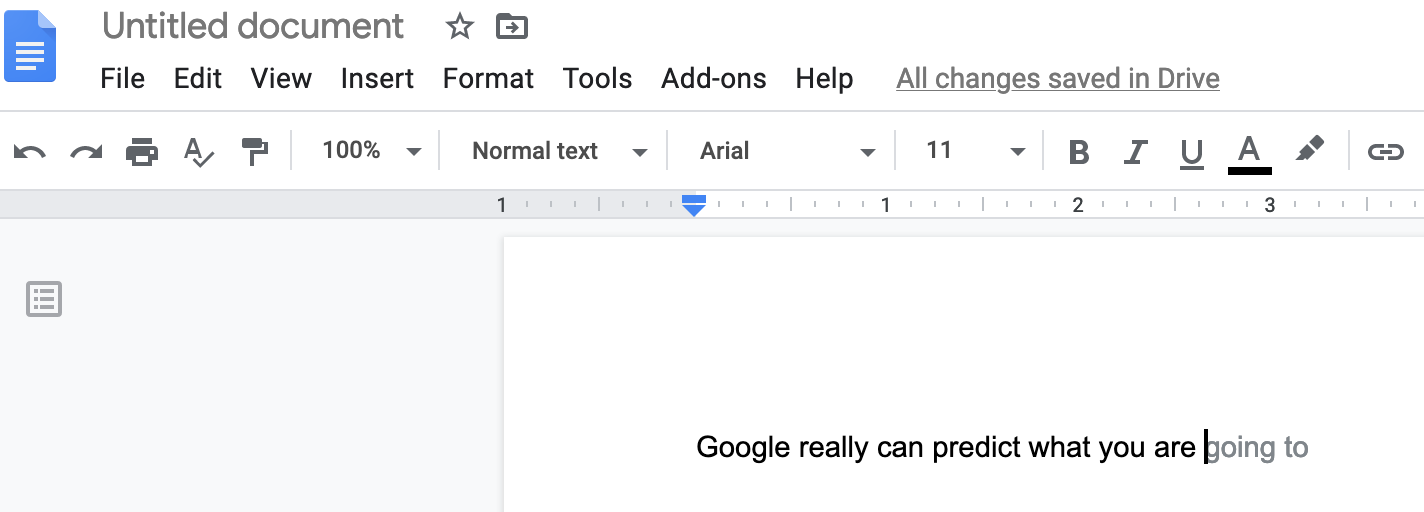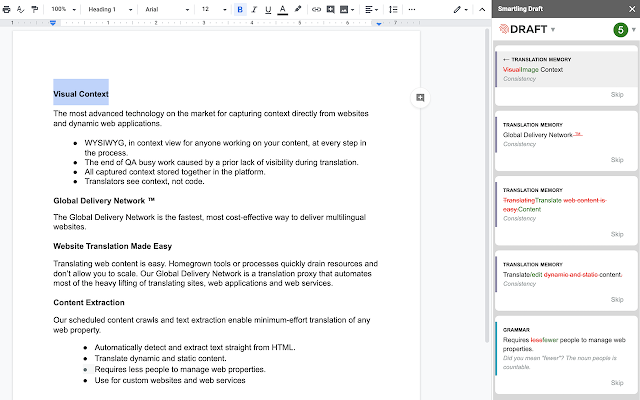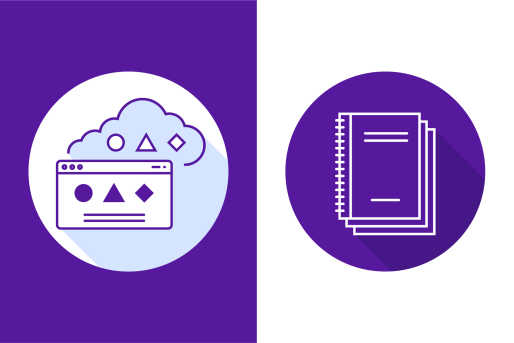When I was a kid, The Jetsons fascinated me. Thoughts of moving sidewalks, self-driving cars and robot housekeepers fueled my daydreams about grown up life.
Now I can command a robot to tell me tomorrow’s weather, read a book to me, play my favorite podcasts and even vacuum my floors. Still waiting on that robot housekeeper, though (call me if you have a lead, my toddler is a slob).
We’ve all seen the expansion of automation and how it has seamlessly improved our everyday lives.
Artificial intelligence has been and continues to make waves in our business tools and processes as well.
And that brings us to an interesting focus: will AI take over one of the most important elements of our lives today, content? What if AI can create content?
Automated content creation is now a reality
Artificial Intelligence (AI), under the guidance of humans, has grown from rudimentary beginnings of simple computer programming to blossoming into helping humans automate tasks and work. It's even at the core of how Smartling works.
AI can be used to analyze data and, in some cases, predict outcomes. It’s important to remember there is always a human attached to AI and it doesn’t run independently (clarifying for the conspiracy theorists).
But the idea that we can have AI create content for us really isn’t very far off. Machine learning is a derivative of AI capabilities that shows some promise. It can mimic the human brain and can be utilized to predict outcomes, fill in logical gaps and analyze text or even speech in some cases.

Just as I’m writing this, Google Docs is automatically generating suggested words, essentially guessing my next though.
AI has the ability to weave a provided list of the words into these narratives in such convincing ways that it compels humans to interact with the content and each other. And we know engagement on blogs and content is always the goal.
Recent examples of AI and automated content creation
While AI received quite a lot of attention, it can be a little tricky to put a finger on an exact definition or clear example.
Instead, we can look at some real-word use cases to better understand how AI, and particularly automated content creation, is leveraged for an improved user experience.
1. Conversational chatbots
Today many bots serve as a path to help customers with quick FAQs which can help businesses make space to use human brains for the meat and potatoes of strategy. With some of the day-to-day pressure off, workers have more time to handle the bulk of planning. In fact, multilingual chatbots are an easy way to offer support to users in their native language, without the need for human agents.
2. Wikipedia’s Content Bot
Wikipedia uses bots to create some half-way decent entries by compiling facts and replicating sentence structure. Wikipedia even utilizes bots to crawl content for stubs, or short articles, to expand with relevant content. By now we know human and machine translation overlap in the Venn diagram of effective translation depending on our needs. But the magic of the human touch is what can elevate translation by way of humor, context, world play and other impactful subtleties.
3. An entire blog of bots
A stellar example of content creation can be found in a cheekily named site entitled This Marketing Blog Does Not Exist. In it, bots formulate content flawlessly for over 30 blogs complete with non-existent author headshots.
4. The AssociatedPress uses bots for quick updates
The Associated Press (AP) taps into AI for quicker turnaround amid the ever-changing news cycle. Think high level tweets, concise updates and the like. The AP shares that the introduction of AI has given breadth to journalists to concentrate on higher level projects and the capability to further establish the publication in the thought leadership realm.
Ultimately, automated content can range anywhere from Google’s suggested words in our emails and docs, to full blown article writing.
How can brands leverage automated content creation?
Not only can you save significant time and potentially cost by automating your processes, but your business can also rely less on the resources end.
Auto content can support human content marketers to give them a leg up to produce content faster and impact your marketing efforts substantially. Even if you begin a business effort with automation and then tap a human content creator, you will be lessening the amount of time spent on the project, leaving more time and space to drive your content marketing efforts more efficiently.
Auto content creation is recommended if you have smaller, lower priority content you need to churn out quickly. It is especially great for getting small, low-priority content that needs to get out quickly.
We may not replace writers just yet
technology, as much as it can help us, has its limits and drawbacks. As we’ve covered in the past, AI isn’t always top tier quality -- just look at how we still rely on human translators.
Quick, high-level tasks can be automated to free up our time for higher priority projects, and the same can be said for content creation. The downside is that the errors or miscalculations that come from AI assistance will need to be mitigated by humans.
Another downside of AI lies in the fact that the human touch is not something AI can replicate just yet. There will always be more advantages of a human tackling a creative project; technology simply does not have the multi-faceted brain of a human. The need for creativity is something AI can’t touch.
Human vs Machine translation
This is a topic we find ourselves coming back to fairly often and the response remains the same. While neural machine translation has evolved into a new level of usability, there will always be the need for human creativity.
Even in general translation, machines still cannot match the quality of a professional in many scenarios, particularly with very specific or niche industries translating obscure terminology or unique marketing copy. There will always be that need for a human to apply their own creativity.
The same currently rings true for automated content creation as a whole -- robots might be able to string together words to create phrases, phrases to create sentences, and sentences to create paragraphs, but it’ll be missing that creative spark. That human touch. Transcreation simply wouldn't be possible without a human translator.
The right balance is machine augmented content creation
I’ve referenced it a couple times now, and that’s because it's not only a great example, but incredibly useful. Suggestions within Google Docs, and Gmail drafts, are automated content creation at its best.
Or rather, it's machine augmented content creation. While writing this, I’m still behind the wheel of the content creation process, but google is there giving me directions. It's suggesting the best terms to use, the best phrases, and even pointing out my mistakes along the way.
It's helping me do my job better and faster with less effort, while enabling me to focus on the creativity required to open a dialogue and put my thoughts down.
Until the machines can really have a mind of their own, this seems like it might be the most effective use we’ve got.
Smartling Draft is automated content creation
A little while ago we introduced Smartling Draft, a tool designed to assist both content writers and translators, helping them stay on brand and save time while writing.
As a Natural Language Generation tool, draft pulls from existing data in your translation memories to suggest phrases that both writers and translators can then incorporate into their new content.

It will even leverage any existing style guides and glossaries stored in Smartling to help maintain brand and tone consistency between your source content and translations.
Ultimately, Draft helps narrow the gap between what’s expressed in the original source content and how this comes out in other languages, creating a consistent content experience in any language.
Don’t you, forget about me
For the foreseeable future, readers and consumers will continue to prefer to hear from humans over bots.
Creative projects attempt to foster human connection; if messaging sounds cold or distant, people are less likely to engage with content.
Authentic messaging and content is an essential to build trust and loyalty - two things businesses always try to create.
About Laura
Laura Wyant is a freelance digital strategist and writer/editor. She is currently working with start-ups, tech companies, and health and healing spaces. Laura has been contributing to the Smartling blog on topics around cloud translation, digital strategy, and overall creative translation process. When she isn’t working in media, she is working to educate herself on matters such as intersectional women’s health and advancements in technology.








